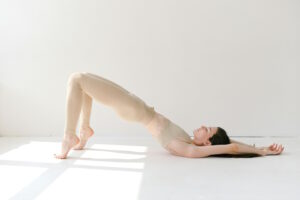
Pilates for mindful body awareness is a powerful practice that combines physical exercise with a heightened awareness of the body’s movements, alignment, and sensations. In this comprehensive guide, we will explore the concept of body awareness in Pilates, the ways in which Pilates enhances mindfulness, its status as a mind-body practice, and the dynamic relationship between physical activity and body awareness within the Pilates discipline.
What is body awareness in Pilates?
Body awareness in Pilates refers to a deep and conscious understanding of your body’s position, movement, and sensations during each exercise. It involves being fully present in the moment, directing your attention inward to connect with your body on a profound level. Key aspects of body awareness in Pilates include:
· Alignment: Paying attention to the proper alignment of your body during exercises, ensuring that you maintain a strong, stable core and optimal posture.
· Breath Awareness: Coordinating your breath with your movements and maintaining a rhythmic breath pattern.
· Muscle Engagement: Being aware of the specific muscles you are engaging in each exercise and feeling the muscles as they lengthen and contract.
· Sensory Perception: Tuning into the sensations in your body, such as muscle tension, stretching, and relaxation, as you perform Pilates movements.
· Mindful Control: Exercising deliberate control over your movements, emphasizing quality over quantity.
Does Pilates help with mindfulness?
Absolutely, Pilates is an excellent practice for enhancing mindfulness. Mindfulness involves paying purposeful attention to the present moment without judgment. Pilates naturally fosters mindfulness in several ways:
· Breath Coordination: Pilates places a strong emphasis on coordinating your breath with movement, promoting a deep connection between body and breath that anchors you in the present moment.
· Focused Attention: Pilates requires you to concentrate on the precise execution of exercises, diverting your thoughts from external distractions and encouraging full engagement with your body.
· Mind-Body Connection: Pilates encourages a strong mind-body connection by emphasizing the importance of being fully aware of your body’s movements and sensations.
· Stress Reduction: Pilates exercises, especially when performed mindfully, can help reduce stress and promote relaxation, which is a core component of mindfulness.
· Body Awareness: Pilates enhances your awareness of your body’s position, alignment, and sensations, making you more attuned to the present moment.
Is Pilates a mind-body practice?
Yes, Pilates is considered a mind-body practice. It combines physical exercise with mental focus and awareness, fostering a deep mind-body connection. Pilates was developed by Joseph Pilates with the intention of creating a holistic approach to physical fitness, and it aligns closely with the principles of mind-body practices. Key characteristics of Pilates as a mind-body practice include:
· Mindful Movement: Pilates emphasizes controlled, deliberate movements that require focused attention and mental engagement.
· Breath Awareness: Coordinating breath with movement is a central component of Pilates, promoting mindfulness and enhancing the mind-body connection.
· Concentration: Pilates exercises demand concentration to execute them correctly, reinforcing the connection between mind and body.
· Body Awareness: Pilates encourages heightened body awareness, which is a core aspect of mind-body practices.
· Stress Reduction: The relaxation and stress-reduction benefits of Pilates further solidify its status as a mind-body practice.
Is Pilates the combination of physical activity and body awareness?
Yes, Pilates can be viewed as the harmonious combination of physical activity and body awareness. It integrates controlled, purposeful movements with a heightened consciousness of the body’s position, alignment, and sensations. Pilates exercises are not simply about going through the motions; they require a deep and mindful connection with your body throughout the practice.
In essence, Pilates is a dynamic partnership between physical activity and body awareness. It teaches you to move with precision, control, and intention while simultaneously nurturing your understanding of your body’s capabilities and needs. This synergy between physicality and awareness is what makes Pilates a unique and effective approach to fitness and well-being.
Summarizing Pilates for Mindful Body Awareness
In summary, Pilates for mindful body awareness is a practice that emphasizes deep and conscious understanding of your body’s movements, alignment, and sensations during each exercise. Pilates enhances mindfulness through breath coordination, focused attention, and a strong mind-body connection. It is undeniably a mind-body practice that combines physical activity with heightened awareness. Pilates represents the harmonious fusion of physical exercise and body awareness, creating a holistic approach to fitness and well-being that benefits both the body and mind.